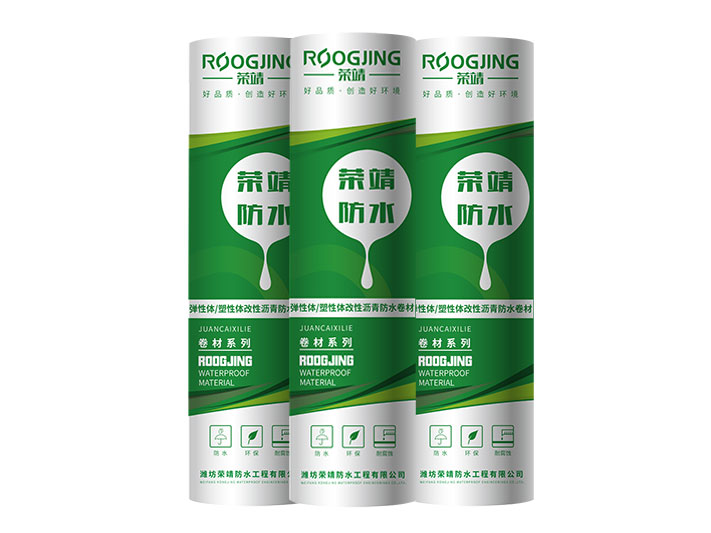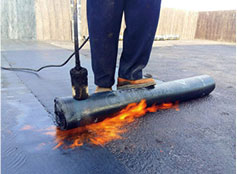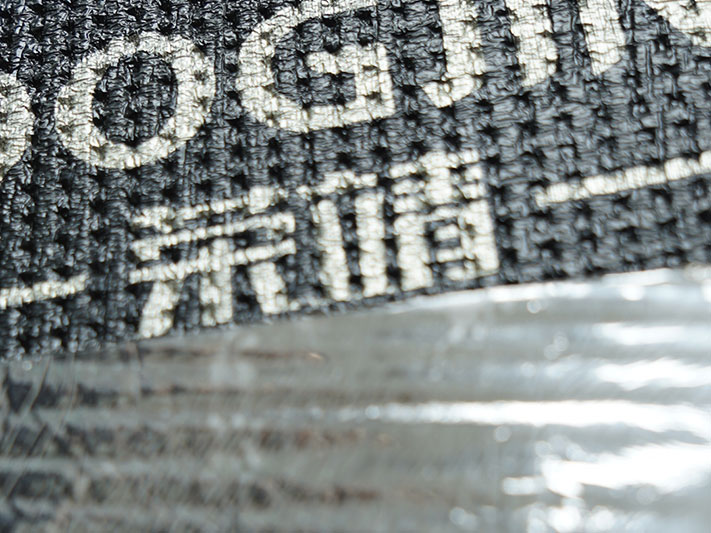
Elastomer/plastic modified asphalt waterproof membrane
- Package : The coiled material is rolled into a cylindrical shape, suitable for external packaging
- Coil width (m) : 1.0
- Coil thickness (mm) : 3mm 4mm 5mm
- Coil length (m) : 10
- Area (㎡/roll) : 10
- Upper surface isolation material : polyethylene film (PE) aluminum foil (PET) fine sand (S) schist (M)
- Lower surface isolation material : Polyethylene film (PE)
 SBS elastomer modified asphalt waterproof coiled material is based on SBS (styrene-butadiene-styrene) thermoplastic elastomer modified asphalt as diffuse coating material, with high-quality polyester felt, glass fiber felt, glass fiber reinforced polyester felt As a tire base, using fine sand, mineral pellets, PE film, aluminum film, etc. as the covering material, using special mechanical stirring, grinding elastomer modified asphalt waterproof membrane APP plastic modified asphalt waterproof membrane is APP (random polypropylene) or APAO, APO (polyolefin strange polymer) modified asphalt as dipping coating material, with high-quality polyester felt, glass fiber felt, as the tire base, with fine sand, mineral particles (flake) The material and PE film are cladding materials, and are made of plastic modified asphalt waterproof membrane refined by advanced technology.
SBS elastomer modified asphalt waterproof coiled material is based on SBS (styrene-butadiene-styrene) thermoplastic elastomer modified asphalt as diffuse coating material, with high-quality polyester felt, glass fiber felt, glass fiber reinforced polyester felt As a tire base, using fine sand, mineral pellets, PE film, aluminum film, etc. as the covering material, using special mechanical stirring, grinding elastomer modified asphalt waterproof membrane APP plastic modified asphalt waterproof membrane is APP (random polypropylene) or APAO, APO (polyolefin strange polymer) modified asphalt as dipping coating material, with high-quality polyester felt, glass fiber felt, as the tire base, with fine sand, mineral particles (flake) The material and PE film are cladding materials, and are made of plastic modified asphalt waterproof membrane refined by advanced technology.

1. Strong impermeability;
2. High tensile strength, large elongation, good dimensional stability and strong adaptability to the base's shrinkage and cracking;
3. Good high and low temperature resistance, SBS is suitable for building waterproofing in lower temperature environment, APP is suitable for building waterproofing in higher temperature environment;
4. Puncture resistance, puncture resistance, tear resistance, corrosion resistance, mildew resistance, good weather resistance;
5. Convenient construction, hot melt construction can be operated in all seasons, and the joint is reliable.
Hot melt method, cold bonding method and cold and hot combined method
The coil material can be constructed either by the hot melt method or the cold bonding method alone, or by the cold and hot combination method, that is, the cold bonding method for a large area, and the hot melt method for the lap joints by the hot melt method: using a flame spray gun or a torch Bake the bottom surface of the coil and the surface of the base layer to melt the asphalt on the surface of the coil. Roll the coil forward while baking, and then roll it with a pressure roller to make it firmly bonded to the base or coil.
Cold bonding method: first apply the adhesive evenly on the waterproof base layer and the coiled material. After a little drying, you can paste the coiled material, and then roll it with a pressure roller to squeeze out the air under the coiled material to make the coiled material flat. Tightly and firmly pasted on the base or coil.
Construction machinery and accessories
Construction tools for cleaning waterproof base: shovel, broom, dust blower, hand hammer, steel chisel, etc.
Construction tools for roll paving: scissors, tape measure, spring box, scraper, brush, pressure roller.
Special hot melt equipment: single-head or multi-head hot melt spray gun or torch. Auxiliary materials: base treatment agent, coil adhesive, closing bead

Coiled material
Before the construction, the qualified base should be cleaned up, and the dust at the corners should be blown away.
1. Brush the base treatment agent evenly and consistently. Do not brush repeatedly.
2. After the base layer treatment agent is dried, the roof waterproofing project and the underground waterproofing project need to be laid with additional layers according to the design requirements. *Determine the order and direction of the coiled material and lay the thread on the base layer, and then lay the coiled material. The different parts of the coiled material should be constructed according to the following requirements.
3. Roofing: Paste or strip pasting of the roll material and the base layer; 800mm should be fully pasted around the roof; the pasting area of the sloped roof should be more than 70% and 100% between the roll material and the roll material
4. Basement bottom plate: The coiled material and the base layer can be fully glued, point glued, strip glued or empty paved, but between the coiled material and the coiled material must be fully glued;
5. Vertical wall of basement: all the materials should be pasted between the coil and the base and between the coil and the coil;
6. Additional layer: The general parts are all pasted, and the deformation joints are allowed to be laid empty.
7. The order of paving is high-span first, then low-span; the same height, first far and then near; same-plane, starting from the low place.
8. Direction of roofing:
9. Slope <3% parallel to the roof ridge.
10. The slope is 3%~15% parallel or perpendicular to the roof ridge.
11. When the slope is greater than 15% or subjected to vibration, it should be paved perpendicular to the roof ridge.
12. The lap joints parallel to the roof ridge are in the direction of water flow. When the joints are perpendicular to the ridge, the joints should be paved along the prevailing wind direction.
Contact
Add:Taitou Town Industrial Park, Shouguang City, Shandong Province
Mail:rongjing@rongjingwaterproof.com
Facebook:+86-18653628345
Whatsapp:+86-18653628345
Wechat:+86-18653628345

Scan code
Copyright by@2020 Weifang Rongjing Waterproof Engineering Co., Ltd. 鲁ICP备14020741号-1 Power by:www.300.cn
 >
> 



